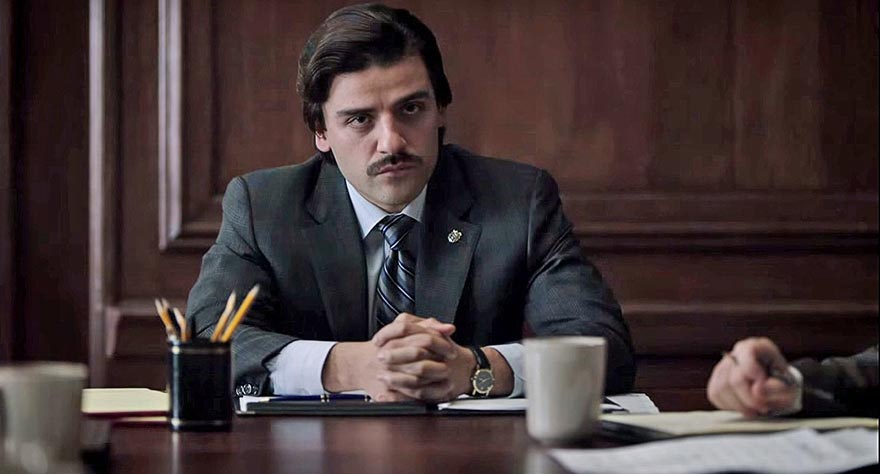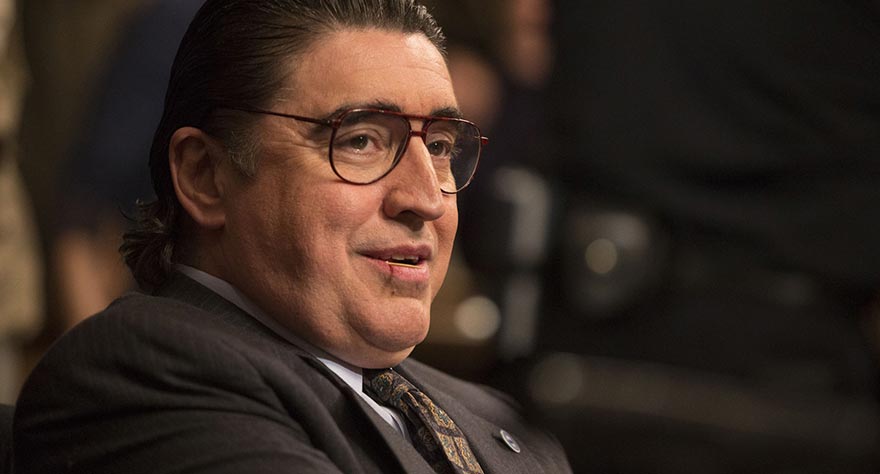Show Me A Hero: Part 3 and 4

Just tuning in? Catch up with our review for Part 1 and 2 here.
“How come the only people talking about this housing thing are white?”
By the end of Part 2, we left Mayor Nick Wasicsko (Oscar Isaac) confounded over the mess the housing crisis created. With council members Henry Spallone (Alfred Molina) and Nick Longo (Jim Bracchitta), along with two others, refusing to budge and “give in” to the supreme court’s order, Nick must either watch his city go bankrupt while the “fantastic four” assholes (an amazingly timed nickname for the four naysaying councilmen) are held in contempt and face jail time, or do whatever he can to turn whoever he can around and get the deal passed.
Part 3 of Show Me A Hero begins with Nick on the phone seeking help from fellow democrats in New York and getting shut out. It ends with the same Maalox-chugging prologue that began proceedings in Part 1. Nick goes through another mayoral election, this time losing to none other than Spallone, who, of course, used the housing crisis as a way to get voters in the booth. One of the highlights from this mid-section is in Spallone’s victory speech, when he mumbles how they’d have to abide by the supreme court’s decision if all else fails and Catherine Keener’s Mary is like, “um, what’d he just say?” It’s that David Simon blink-and-you’ll-miss-it wit on display again, this time aimed at the cruel nature of political games and the wishful thinking of drawing a line between people’s core issues and the politics that govern them. That line is never straight and rarely connects both ends.
A couple of characters go through major transformations in Parts 3 and 4. Starting with Nick, naturally, who manages to make the crucial vote pass in council before losing the mayoral election, and moves into a beautiful house with Nay (Carla Quevedo) whom he finally marries. He spirals out of politics for the time being. He visits his father’s grave, and says,—echoing Vini Restiano (Winona Ryder) from Part 2—“As miserable as it is when you’re in the middle of things, at least you’re in the middle of things!” One gets the strong sense that the corrupt nature of the political game, and its consequences on the person trying to do an effective job, is the primal theme hiding behind the housing crisis in Show Me A Hero. A point subtly elucidated when someone quotes the show’s title to Jim (Michael Stahl-David), who seems convinced the line comes from Fitzgerald the politician of this-or-the-other district, and not, the Fitzgerald. These people can’t think past their own congressional bubble, and it doesn’t take a Ph.D. in Political Science to figure out what Simon and William F. Zorzi think about that.
Meanwhile, on the other side of the parkway, Doreen’s (Natalie Paul) character arc bends the furthest. Now a single mother, she goes from a decrepit welfare hotel in upstate New York, back to the projects, writes an emotional letter to her son at the end of Part 3, and becomes a full-time junkie in Part 4. Her father, noticing the latter, leaves her be and tells her to reach out whenever she needs to. Could this be Simon and Zorzi telling us, in ever-so-subtle ways, what part of the problem is? In any case, Doreen’s turn to drugs (considering her surrounding) isn’t as suspect as her father’s lack of care, but neither is as surprising as the slew of bad decisions made by a new character. Billie (Dominique Fishback) is a teenager who decides she doesn’t want to go school or work anymore because she doesn’t feel like it. She refuses to listen to her poor mother, and instead, meets a punk at a party, and gets pregnant. That she’s supposedly in love with this idiot comes second to her pretty horrendous life decisions, all the more confirmed when he gets caught and locked up in Rikers. If there are any redeeming qualities to Billie, I’m not seeing them yet, so here’s hoping for some life-changing decisions in the next two parts.
At least Mary continues to grow in redeeming qualities. After Nick’s futile phone conversations at the beginning of Part 3, we see her getting interviewed—hello, Catherine Keener’s highlight reel—over her thoughts on the housing. Her worries are legitimate and not covering up any interior racism, but over the course of the next two hours we begin to see her slowly lose faith in Spallone, and starting to second-guess her protests over housing units that are happening whether she likes it or not. Moreover, she begins to see that not everyone from the other side of town has much of a different lifestyle. In tandem, a conversation with Norma (LaTanya Richardson Jackson) reveals that some black people are just as hesitant to live with middle-class whites as the other way around; preferring, as she says, to “be with her own.” It’s a sentiment that’s all-too-easy to understand, with no room for naïve beliefs like, ‘why can’t we all just get along?’ It’s Simon, Zorzi, and Paul Haggis reminding us again of how complex society is: people fear change and intrusion in their comfort zones, regardless of any big-picture good intentions. The conclusion to Part 4, after Bruce Springsteen obliges with another suitable episode-closer in the form of “Secret Garden,” shows us just how ugly this fear can become.

With Parts 3 and 4, Show Me A Hero continues its strong bid as some of the best television of 2015. If there were any doubts around Isaac’s performance after the first two hours, they’re surely put to bed with these parts: the man is a shoe-in for Emmy and Golden Globe nominations and a strong candidate for wins. My only hope is that Keener and Molina (who is full of frame-worthy facial expressions and GIF-tastic gestures) get recognized too. What I chew on after these two parts is how seamlessly deeper Simon, Zorzi and Haggis go into the political belly of the beast, without grandstanding in the name of democracy. It’s a given that everyone’s got the right to a decent home, and that the people of Yonkers are turning more and more ugly with their racism, but there’s a plethora of problems on the other side of the parkway and it’s good they aren’t going ignored or justified. Oscar Newman (Peter Riegart) gets his 15 minutes in these two hours, bringing forward a crucial question on how different structures of these housing units could lead to crime and disenfranchisement. And, as fun as it is to watch Jon Bernthal huff, puff and roll his eyes, one wonders if Sussman is helping or hindering the cause. In any case, a healthy dose of debate has been injected to both sides of the argument in Parts 3 and 4, while the flawless narrative progression and supremely immersive characterizations continue.
The stage is set for Part 5 and 6 to conclude the proceedings with a bang, but it wouldn’t be a David Simon show without a few whimpers on the way. I expect nothing less, and won’t be surprised if we get more.
Rating: 9/10
